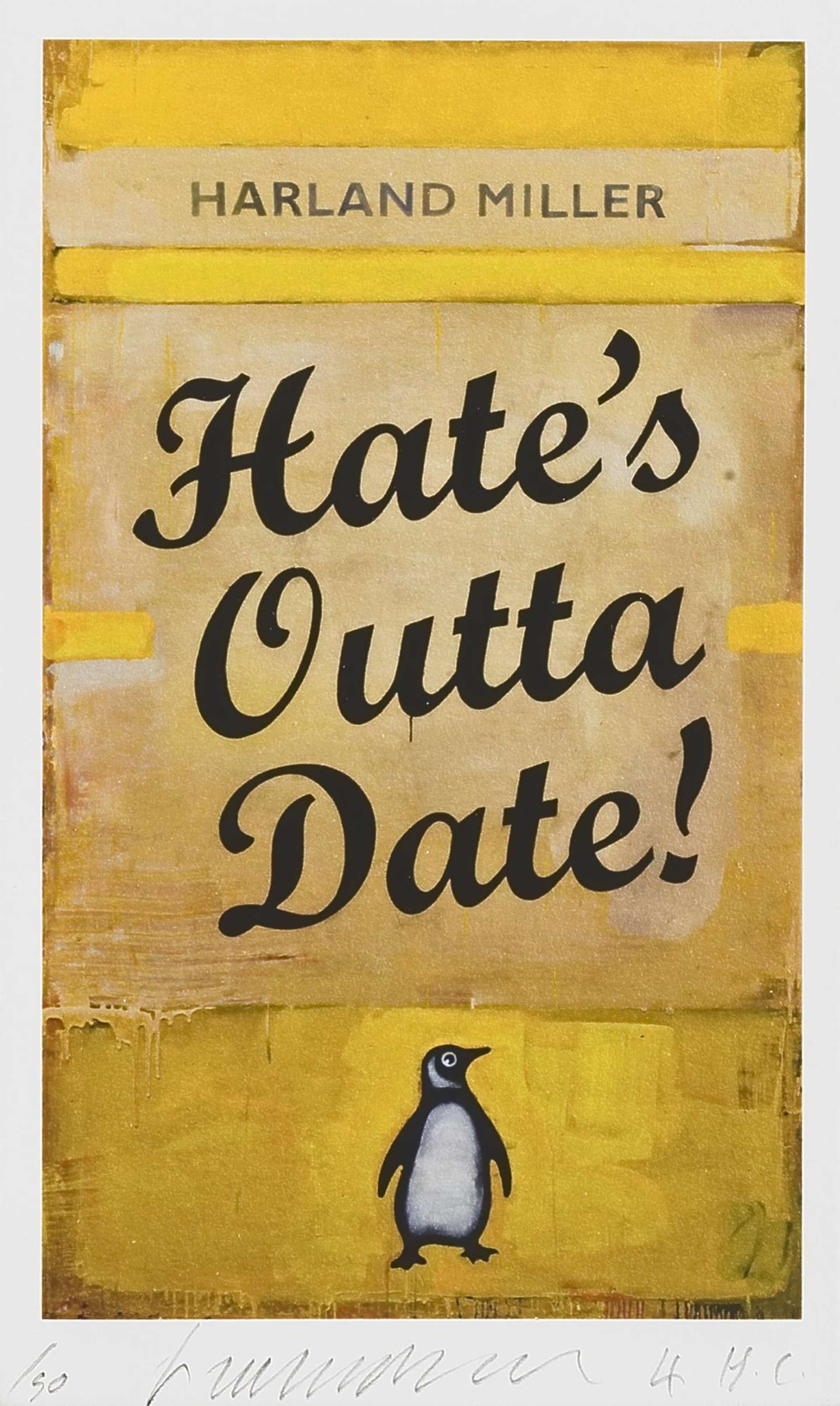
Hate's Outta Date!

Hate's Outta Date!
Signed Print
Harland Miller
£5,500-£8,500
$10,500-$16,000 Value Indicator
$9,500-$14,500 Value Indicator
¥50,000-¥80,000 Value Indicator
€6,500-€10,000 Value Indicator
$50,000-$80,000 Value Indicator
¥1,050,000-¥1,620,000 Value Indicator
$7,000-$10,500 Value Indicator
AAGR (5 years) This estimate blends recent public auction records with our own private sale data and network demand.
There aren't enough data points on this work for a comprehensive result. Please speak to a specialist by making an enquiry.
Medium: Giclée print
Edition size: 50
Year: 2017
Size: H 15cm x W 10cm
Signed: Yes
Format: Signed Print
TradingFloor
MyPortfolio
Your collection tracked in real time.
Build your portfolio, manage valuations, view return against your collection and watch works you're looking for.
Track auction value trend
Auction Results
| Auction Date | Auction House | Artwork | Hammer Price | Return to Seller | Buyer Paid |
|---|---|---|---|---|---|
| September 2022 | Tate Ward Auctions - United Kingdom | Hate's Outta Date! - Signed Print | |||
| August 2022 | Forum Auctions London - United Kingdom | Hate's Outta Date! - Signed Print | |||
| May 2022 | Tate Ward Auctions - United Kingdom | Hate's Outta Date! - Signed Print | |||
| May 2021 | Tate Ward Auctions - United Kingdom | Hate's Outta Date! - Signed Print | |||
| October 2020 | Bonhams Knightsbridge - United Kingdom | Hate's Outta Date! - Signed Print | |||
| March 2020 | Sotheby's London - United Kingdom | Hate's Outta Date! - Signed Print | |||
| July 2019 | Tate Ward Auctions - United Kingdom | Hate's Outta Date! - Signed Print |
Meaning & Analysis
Hate’s Outta Date! is one of the more uplifting prints from Harland Miller’s Penguin series (2001-), inspired by the cover designs of Vintage Penguin Classics. Miller, who’s multidisciplinary practice has a strong element of text and literature, dissects the relationship between text and image through inserting his own clever, satirical titles onto the authentically replicated dust jackets. Miller’s choice of colour is highly significant in this body of work, inspired by the original Penguin format itself. Through embedding his evocative titles, occasionally dealing with heavy or controversial topics such as death, politics, drugs, sex etc., into certain colour fields, he aims to manipulate the meaning of language, the viewer’s emotions and their reception of the work.
Hate’s Outta Date! features the trademark Penguin logo. Miller’s use of a bright mustard-yellow gives his invented title a more light-hearted, positive. Through working with layers of paint on the original cover’s high-resolution digital photograph, the resulting painting mimics the rugged look of a used book, as seen transferred onto this print.
In this exploration of text, image and form, Miller draws on a range of artistic influences from Abstract Expressionism, Colour Field and Pop Art movements, especially Master Colourist Mark Rothko. The message of this print, Hate’s Outta Date! strikes as especially powerful in that the universality of its meaning is cleverly reiterated by that of its context in the form of the widely known and loved Penguin classics.